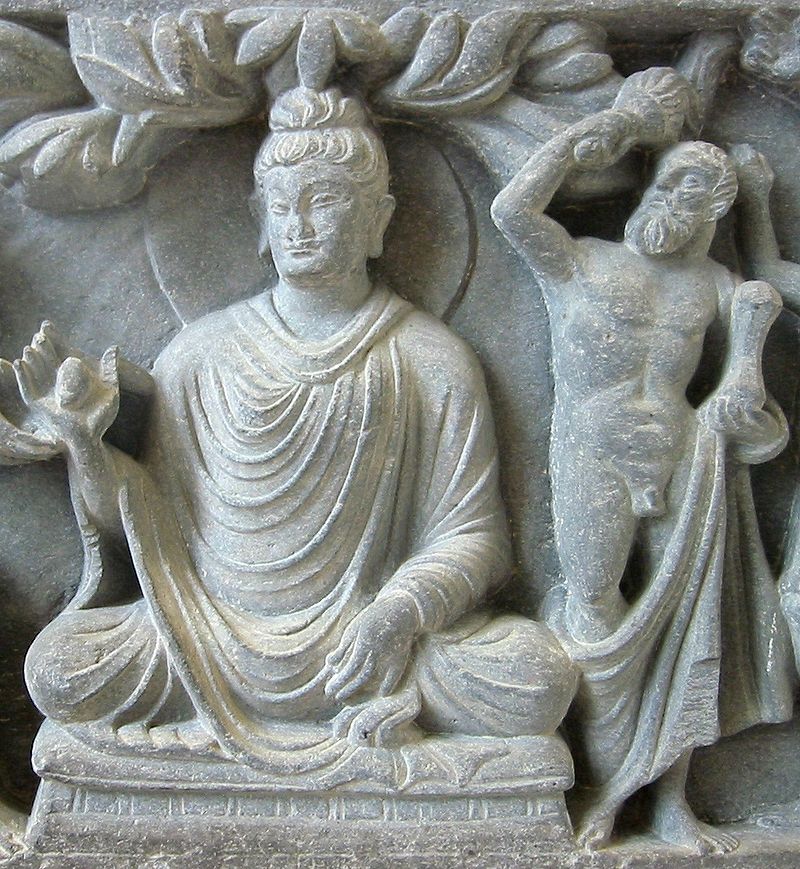The Greek Experience of India
By Owain Williams
“Generally speaking, the men who hitherto have written on the affairs of India, were a set of liars,” at least, according to Strabo (2.1.9). It is this central premise that Richard Stoneman has set out to explore in his exploration of the cultural interactions between the ancient Greeks and Indians in The Greek Experience of India (Oxford: Princeton University Press, 2019). In his own words, “I hope to show that this encounter was more than an encounter between people … that two peoples grew and learned as a result of their familiarity with one another” (p. 2). Truly, this is an admirable ambition, the pursuit of which will lead the reader on an odyssey of hundreds of years, from the shores of the Aegean to the island of Sri Lanka.
The core of the book is source criticism, questioning the ancients’ testimonies about India, both Greek and Indian, and comparing them with one another to provide a holistic account of the subcontinent from the fourth to the first centuries BC. Like any good scholar who concerns themselves with sources, Stoneman begins with a truly fascinating discussion of the biases and assumptions that observers of India have had since antiquity, often concerning spiritualism and mysticism at the expense of other facets of Indian society, that can still be felt today. Particularly illuminating was Stoneman’s exploration of the ‘orientalism’ of early modern European observers who, thanks to an enduring belief that India has no ancient history, could be so dismissive of Indian history. One striking quote was of Percy Gardner, who said, “The art of Asoka is a mature art; in some respects more mature than the Greek art of the time, though of course far inferior to it, at least to our eyes” (quoted on p. 9). Similarly, Stoneman discusses how nationalism has influenced some Indian scholars, who have either placed too much faith in Strabo’s scathing dismissal of Greek writers or dismiss any Greek influence on Indian society or architecture entirely. Hopefully, Stoneman’s work will help reduce this divide.

An Indian sculptural relief of Buddha, accompanied by the god Vajrapāni. Depending on the depiction,
Vajrapāni could take on elements of either Zeus or Heracles.
The book is divided into three parts. Part one covers cultural interactions at the time of Alexander’s invasion of India, the beginning of large-scale Greek interactions with India, focusing on the works of Alexander’s companions, such as Nearchus – Strabo had a strong opinion of these writers (15.1.28). Part two deals with the writer Megasthenes, an ambassador from Seleucus I to the court of Candragupta, which forms the “lynchpin” of the book, “for he was the authority for all the later classical accounts of India” (p. 24). Finally, part three concerns Greek-Indian interactions in the centuries after Megasthenes’ ambassadorship, a time when Greeks had become more settled near and within India. Each part discusses a variety of topics, from Indian society and culture, to philosophy and the natural world (even addressing Herodotus’ gold-digging ants – see, for example, 3.102). All the while Stoneman creates a rich and colourful (see Arian’s Indica 16.2) tapestry of ancient Indian civilisation – “Northern India … was by no means a homogeneous culture” (p. 151) – providing a fascinating account of the sub-continent, one which I had to force myself to stop reading as the night wore on.
To those who, like me, want to explore other ancient cultures beyond the Mediterranean basin, this is an excellent book. Stoneman has provided a familiar frame for an unfamiliar place in the world that will surely endure as required reading for any student of Alexander, the Indo-Greeks, and Ancient India.
The Greek Experience of India: From Alexander to the Indo-Greeks by Richard Stoneman is available from Princeton University Press for £25.00 (paperback).
Image caption amended after insight from Twitter user @Charlesdhmmr.

